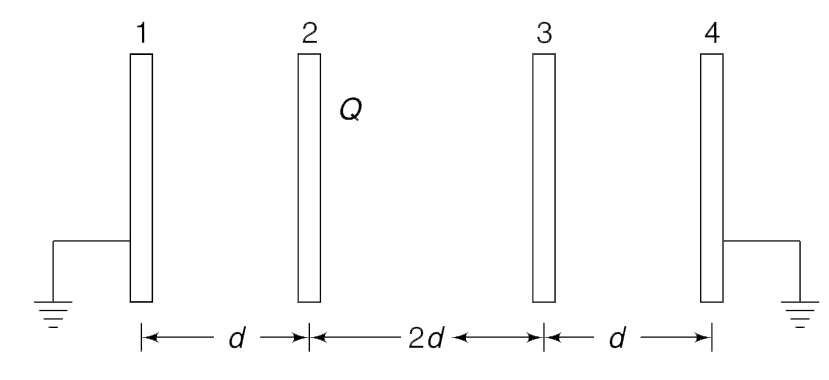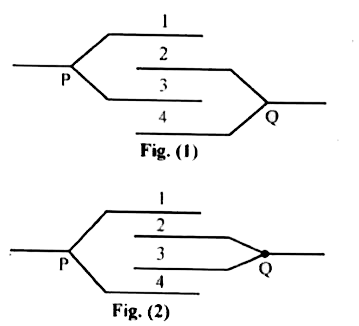In a kitchen, there are 108 utensils, consisting of bowls, plates and glasses. The ratio of bowls, plates and glasses is 4 : 2 : 3. A utensil is picked at random. Find the probability that it is a plate.
2/9
4/9
3/9
5/9
The correct Answer is:A
Step by step video, text & image solution for In a kitchen, there are 108 utensils, consisting of bowls, plates and glasses. The ratio of bowls, plates and glasses is 4 : 2 : 3. A utensil is picked at random. Find the probability that it is a plate. by Maths experts to help you in doubts & scoring excellent marks in Class 9 exams.
Topper's Solved these Questions
- BOOK - MTG IIT JEE FOUNDATIONCHAPTER - PROBABILITYEXERCISE - EXERCISE (MATCH THE FOLLOWING)1videos
PROBABILITY
- BOOK - MTG IIT JEE FOUNDATIONCHAPTER - PROBABILITYEXERCISE - EXERCISE (ASSERTION AND REASON TYPE)5videos
PROBABILITY
- BOOK - MTG IIT JEE FOUNDATIONCHAPTER - PROBABILITYEXERCISE - NCERT SECTION (EXERCISE 15.1)20videos
PROBABILITY
- BOOK - MTG IIT JEE FOUNDATIONCHAPTER - POLYNOMIALSEXERCISE - Olympiad/HOTS Corner20videos
POLYNOMIALS
- BOOK - MTG IIT JEE FOUNDATIONCHAPTER - QUADRILATERALS EXERCISE - Olympiad/HOTS CORNER15videos
QUADRILATERALS
Similar Questions
A drop of water of 0.2 g mass is placed between two well cleaned glass plates, the distance between which is 0.01 cm. Find the force of attraction between the plates,
View SolutionIn given questions, three statements are given followed by four conclusions numbered I,II,III and IV. You have to take the given statements to be true even if they seem to be at variance with commonly known facts and then decide which of the given conclusions logically follows from the given statements disregarding commonly known facts.
Statements: All cups are glasses. Some glasses are bowls. No bowl is a plate.
Conclusions: I. No cup is plate
II. No glass is a plate.
III. Some plates are bowls.
IV. Some cups are not glasses.
(a) None follows
(b) Only either I or III follows
(c) Only II and III follows
(d) Only III and IV follows
(e) None of these.View Solution
Knowledge Check
- Question 1 - Select One
There are 150 steel utensils , 20 allumiunm utensils and 80 glass untensils in a kitchen . A untensil is chose at random . Find the probabilityn that the selected utensil is :
not of steel :A3/5B2/5C5/3D5/2 - Question 2 - Select One
There are 150 steel utensils , 20 allumiunm utensils and 80 glass untensils in a kitchen . A untensil is chose at random . Find the probabilityn that the selected utensil is :
is of metal :A17/25B25/17C3/5D2/25 - Question 3 - Select One
A glass plate of length 20 cm and breadth 0.2 cm just touches the water surface in a beaker. The surface tension of water is 72 dyne/cm. The weight of the glass plate is 25 g. The weight that must be placed in the right pan to counter pose the balance is
A25 gB28 gC22 gD21.3 g
As shown in the figure, two large black plane surfaces are maintained at constant temperature T1 and T2(T1>T2). Two thin black plates are placed between the two surfaces and in parallel to them. After some time, steady conditions are obtained. The ratio of heat transfer rate between plate-1 and plate-3 to the ratio of original (when plate-3 and plate- 4 was not present) heat transfer rate between plate-1 and plate-2 in steady state is η. Find 1η.
'(##CEN_KSR_PHY_JEE_C13_E01_040_Q14##)'View SolutionFour large identical metallic plates are placed as shown in the Figure. Plate 2 is given a charge Q. All other plates are neutral. Now plates 1 and 4 are earthed. Area of each plate is A.
(a) Find charge appearing on right side of plate 3.
(b) Find potential difference between plates 1 and 2.
 View Solution
View SolutionThe following arrangement consists of four plates each of area A. the separation between the consecutive plates is d. what is the ratio of the effective capacitance between P and Q as shown in figures (1) and (2).
 View Solution
View SolutionA parallel plate capacitor of plate area (1×3)m2 and plate separation 5.0 mm is charged to 10 kV in air. Find charge density and field displacement.
View SolutionIn a parallel plate condenser, the radius of each circular plate is 12cm and the distance between the plates is 5mm. There is a glass slab of 3mm thick and of radius 12cm with dielectric constant 6 between its plates. The capacity of the condenser will be
View Solution

